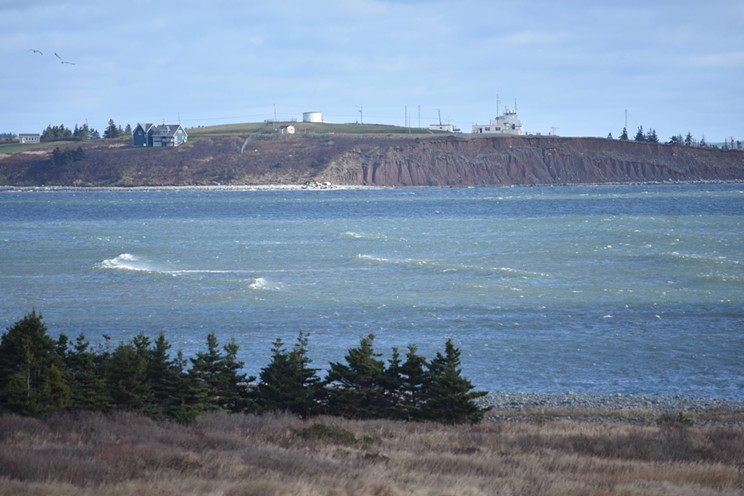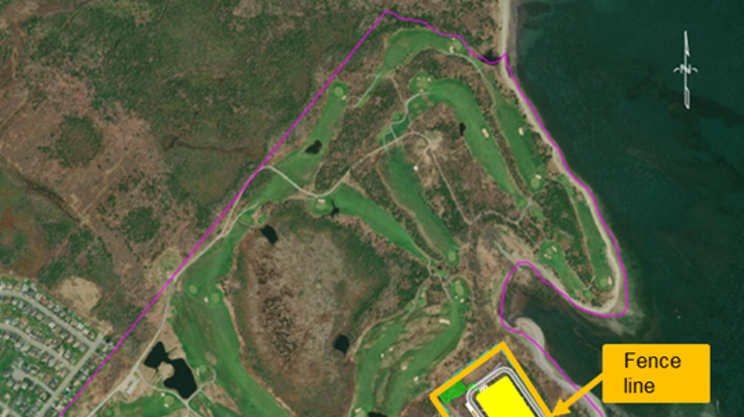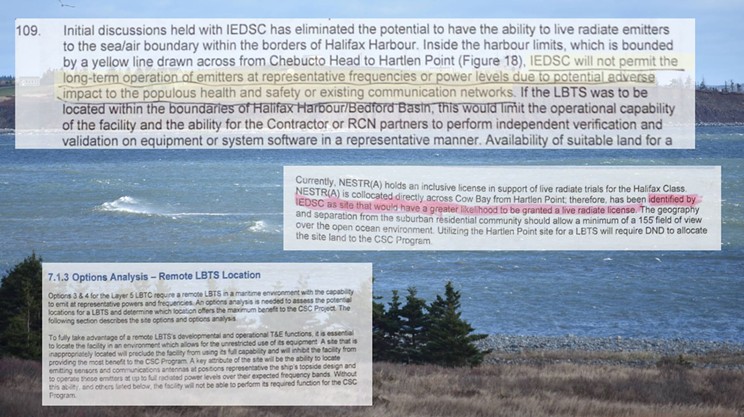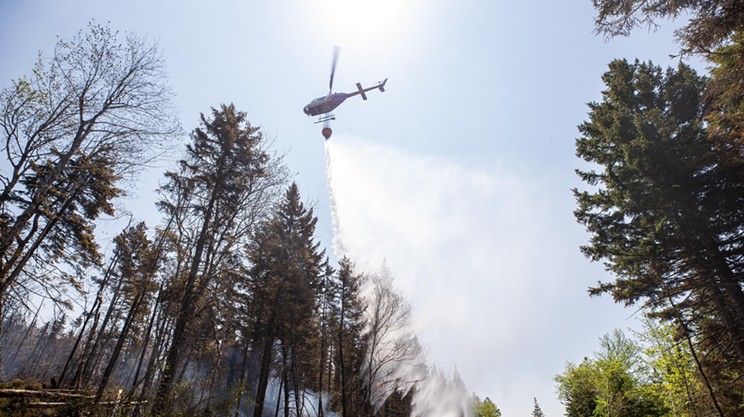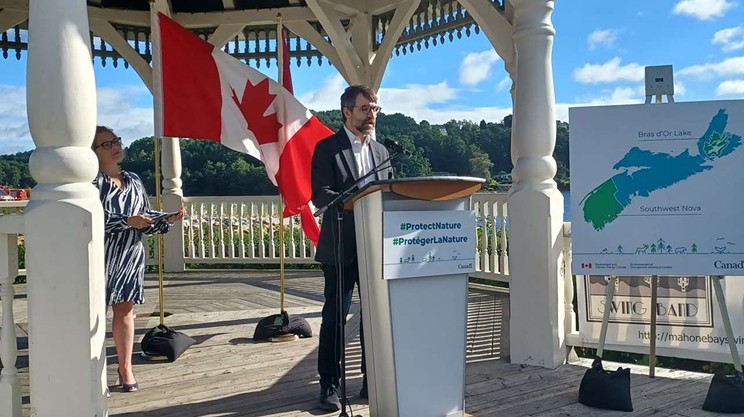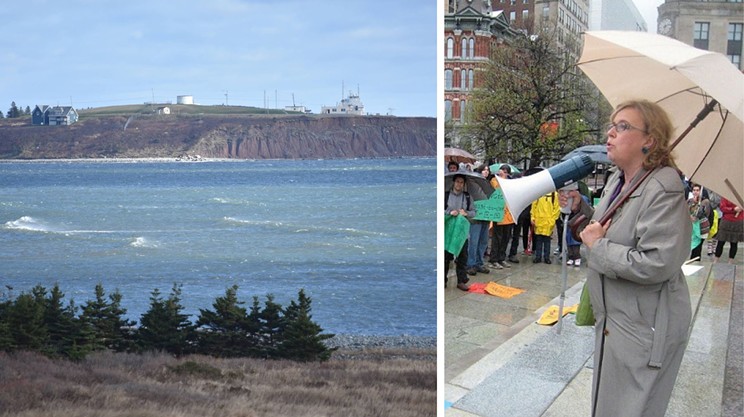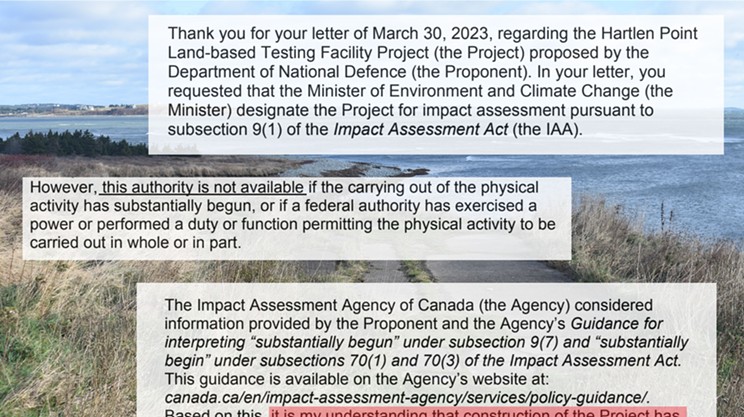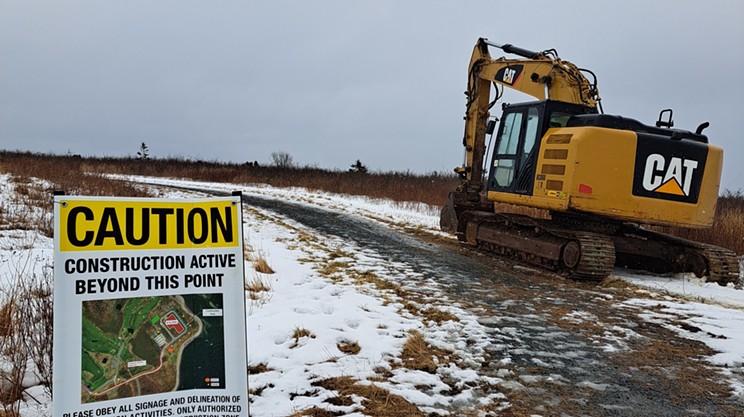How much heed will federal environment minister Steven Guilbeault pay to concerns about the potential impacts of a 93,000-square-metre military testing site in Hartlen Point? That’s the question a group of Haligonians and 20,000 petitioners are waiting to have answered before July 8, 2023. The conservation group behind Protect Hartlen Point—a collective of Eastern Passage residents, environmentalists, birders, surfers and lobster fishers concerned about the Department of National Defence’s plans to build a $129-million land-based warship testing site on one of Canada’s most biodiverse bird habitats—is hoping to catch the minister’s interest enough to spark a second look at the DND project’s environmental footprint. They’ve filed a request with Guilbeault’s office in hopes of triggering a full, independent review of the military’s plans for the site—along with the DND’s environmental due diligence in carrying out its plans.
“They're gonna have to tell us exactly what they plan on putting in there,” says Angela Granchelli, who has lived in Eastern Passage for 15 years and has concerns about the DND’s choice of Hartlen Point for its radio-testing facility. “Because so far, it’s been, you know, ‘We’re gonna have a building this size; we’re going to clear this amount of land,’ but… that keeps growing, and they’ve got to be more transparent.”
Neighbours requesting thorough, unbiased impact assessment
The DND is in the midst of laying gravel for an eventual two-storey, 11,500-square-metre warehouse and office building, within which it can test its future fleet of Canadian Surface Combatant ships’ combat and communication systems. The site’s overall footprint—with an access road, staff parking and security fencing—is expected to be closer to 92,810 square metres, or roughly the equivalent of 17 football fields. The ships are a big deal: Canada will likely spend upwards of $84.5 billion on the design and construction of the 15 vessels by the time they’re completed in 2049. (As recently as November, the uppermost estimate was $79.7 billion.) Both Lockheed Martin and Irving are leading the design and build of the ships, described as Canada’s “major surface component of maritime combat power.”

Canada’s military officials see Hartlen Point—a windswept, coastal patch of Crown land which the DND manages—as “critical to ensuring the new ships are ready” and the ideal site for a “one-of-a-kind facility” that will “foster innovation and support sustainable growth in Canada’s marine industry.” The Navy’s official Atlantic newspaper, The Trident, claims that the project will bring an estimated 350 jobs to Halifax through its construction phase.
Some neighbours are skeptical. They worry about the planned military site’s potential effects on the more than 300 bird species that migrate to Hartlen Point every year. Home to snowy owls and red-throated loons, it’s considered “one of the best mainland migrant traps in Nova Scotia,” according to the Nova Scotia Bird Society; and the 10th most biodiverse bird habitat in Canada, according to eBird, a global crowdsourced inventory of bird species and where to find them.
Tony Rusinak is one of those neighbours. He’s been critical of the DND’s community engagement efforts and feels many of his neighbours haven’t had enough opportunities to ask the military questions about what’s coming. The DND filed an impact assessment registry about its plans in January 2021 and provided an online feedback portal, but closed that portal on Jan. 26, 2021. There were no door-to-door visits or flyers, and no public engagement sessions for 15 months.
“This is a… 25-metre-tall, high-powered radio-frequency-emitting warship testing facility,” Rusinak told The Coast in November. “Anyone with half a brain looking at this would say this is going to destroy Hartlen Point as a critically important birding area; it will decimate that habitat and it will kill birds.”
DND-commissioned surveys deem site’s potential effects ‘not significant’
The DND, for its part, says it’s treating the environment and wildlife at Hartlen Point as a “top priority.” Earlier in March, the department released the results of four third-party environmental studies led by “unbiased experts,” covering the project’s potential impact on soil, wetlands, traffic and the area’s birds and bats. The DND contracted SNC Lavalin, Canadian British Consulting Limited (CBCL) and Dartmouth-based design and consultancy firm Stantec to complete the reports. The general consensus? That the future CFB-Halifax site’s residual effects were “not significant” and could be satisfied with mitigation efforts.
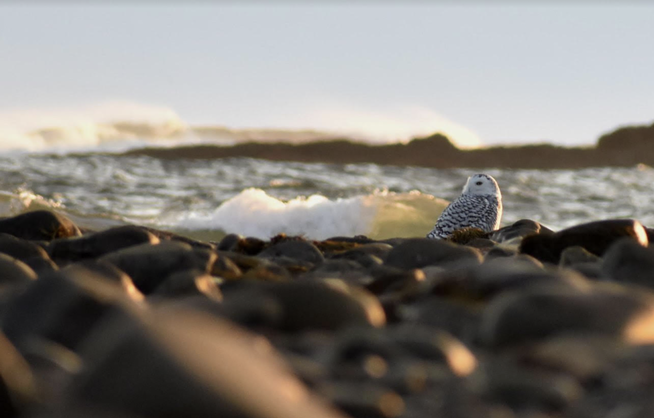
Rusinak isn’t convinced. Neither is Halifax resident Karen Robb, who has family living in Eastern Passage. That’s because of the finicky way Canada’s oversight structure works: The federal government has the authority to submit a project to a full environmental impact assessment, to be carried out by the Impact Assessment Agency of Canada, but that authority is guided, in part, by what falls under the confusingly-titled Physical Activities Regulations—essentially, whether the project involves things like mining, nuclear facilities, hazardous waste or national parks. The DND’s Hartlen Point plans do not. And because of this, even though the DND’s project could be interpreted as “the construction and operation of a new military base” (in which case, it would require the IAAC’s review), and though it might qualify—but hasn’t been designated—as a migratory bird sanctuary (in which case, it would also trigger the agency’s involvement), the authority deemed most responsible for reviewing the DND’s environmental impacts at Hartlen Point, per Canada’s laws, is the DND itself.
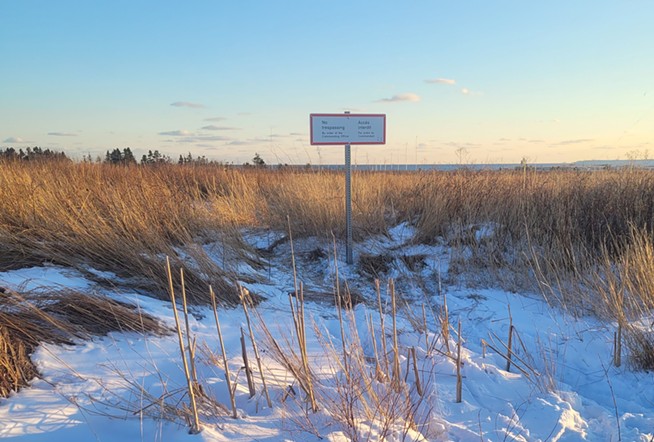
That’s a conflict of interest, according to Robb.
“In effect, the DND approved its own project,” she argues, speaking by phone with The Coast.
In turn, Robb is filing her own request for the IAAC to get involved. Robb, Rusinak and Granchelli are three signatories on a 78-page letter to minister Guilbeault, calling on his office to designate the Canadian military’s Hartlen Point project under the Impact Assessment Act. They’re hoping, with Guilbeault’s ear, to trigger a complete environmental impact assessment at Hartlen Point—one which would take into account the DND’s growing project footprint, along with what they argue is previously neglected research about the effects of radio frequencies on birds and the added wildfire risk that comes with draining wetlands.
“We get these information sessions from DND, which are basically like, ‘We’re gonna do this, and it’s all going to be fine.’ And that’s not actually the case,” Granchelli tells The Coast.
“We get these information sessions from DND, which are basically like, ‘We’re gonna do this, and it’s all going to be fine.’ And that’s not actually the case.”
tweet this
Per the process, Guilbeault has until Saturday, July 8, 2023 to provide a response with his decision and reasons for it. In an emailed statement provided to The Coast, a DND spokesperson says the department is thankful to the group of residents “for their passion and respect for the thriving biodiversity” at Hartlen Point, and adds the DND “will comply with any decision and recommendation” that Guilbeault makes.
Concerns about DND site’s growing footprint
Robb is hopeful that, at the very least, appealing to Guilbeault might lead to more answers about the DND’s plans for Hartlen Point. For one thing, the IAAC is involved: The agency has been compiling all of the DND’s reports to provide to the environment minister in order to inform his decision about whether the project warrants further review. With that, Robb hopes, more details might come—or crystallize—about a project that has proven somewhat amorphous over the two years it’s been public.
When The Coast first reported on the DND’s plans last November, they were earmarked at $65 million for a 9,000-square-metre facility. That grew to 11,500 square metres by January 2023, at a cost of $129 million. In March, it grew again—this time, to a total project footprint of 62,500 square meters. (The facility within the project boundary remained the same size.) Now, according to the Department of Fisheries and Oceans, the final project site is expected to top out at around 92,810 square metres.
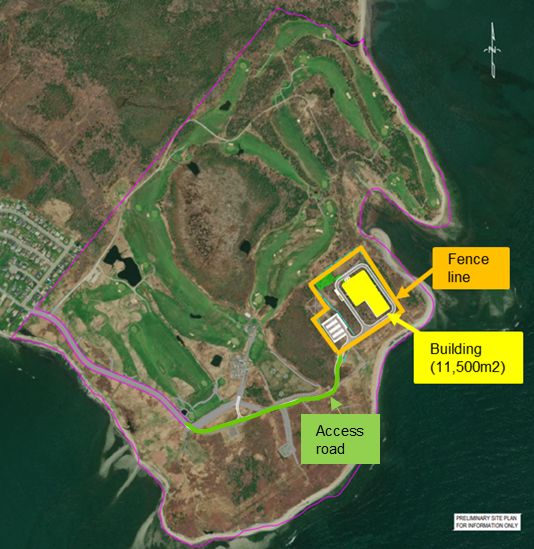
“This project has been approved, but we don’t know the basics,” Robb says. “We’ve never seen a concept drawing on the basic design of the building. We don’t know how big the site is going to be, because we’re getting this project creep. And we don’t actually know how it’s going to function.”
The DND has stressed that it’s not building a weapons-testing facility, but that its site will be for “operational and integration testing” of the ships’ systems, including “command and control, navigation, information, and security in a real, over-the-ocean environment.”
Radio frequencies can affect birds’ navigation, study shows
The radio frequency testing worries Robb, Rusinak and Granchelli. Canada’s military says its plans are to put its soon-to-be-built Canadian Surface Combatant ships’ communication and navigation systems through “rigorous tests and trials” at Hartlen Point before the ships are assembled. That involves broadcasting radio signals over a 130-degree span of the Atlantic Ocean.
Stantec’s environmental report notes that the DND’s planned radiofrequency broadcast schedule is “yet to be determined,” and that any radio frequencies within the remaining 230-degree range “will only emit in an upward direction.” It further concludes that radio frequencies operating within limits governed by Health Canada are “proven to have no adverse health effects.” A CBCL bird and bat survey mentions a “long history” of high-frequency surface wave radar at Hartlen Point, but goes no further into the potential risks of radio emissions on migratory birds.
That’s an oversight, according to environmental anthropologist John Kearney. An adjunct professor in Dalhousie University’s marine affairs program, Kearney has spent years studying the impact of coastal industries on migratory birds in Nova Scotia. He points to research from as far back as 2015 that concludes that certain radio frequencies can—and do—interfere with birds’ ability to navigate. That has to do with the way birds perceive the world around them, Kearney tells The Coast.
“For a long time,” he says, speaking by phone, “we saw them as navigating by the stars and by landmarks—and they do those things. But what scientists have recently discovered is perhaps their primary navigating is through magnetic sensing.”
Radio frequencies are both electric and magnetic. And enough magnetic interference can throw off a bird’s internal sense of north and south. Picture the way a magnet can swing a compass needle: That, research suggests, is roughly what happens to birds exposed to certain radio-frequency ranges. (The good news: A bird regains its ability to navigate once it’s left the radio-frequency field.)
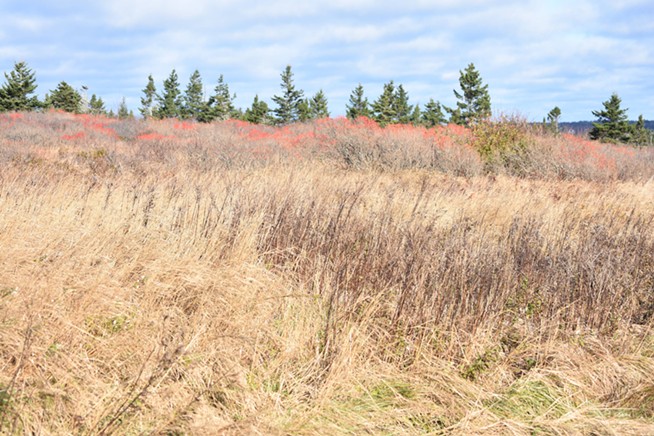
Will it happen at Hartlen Point? And would it be significant enough to worry about? That depends, in all likelihood, on the range and intensity of frequencies the site uses, Kearney says—something he feels is worth a closer look.
“These coastal areas are very important for birds migrating,” he says. “I’m not saying that [the DND’s radio-frequency testing] is going to affect the birds, but I think we need to know before that [project] goes ahead.”
Neighbours worry about strain on evacuation routes with one road
Granchelli has another worst-case scenario on her mind: As a resident of one of the last homes in a subdivision near the end of Shore Road, she can’t help but think of the added traffic strain to what she calls an already chokepointed road linking Eastern Passage’s residents with the rest of the HRM. In the last five years, Shore Road’s residents have received three evacuation advisories due to storm surges and hurricane-force winds. She worries about the traffic burden another 120-180 DND staffers and their vehicles might add in the event of an emergency—and what issues construction might cause for residents and staffers who need to get out quickly.
The memory of Tantallon’s recent wildfire lingers, too.
“There’s a lot of houses down there that have no other way out,” Granchelli tells The Coast.
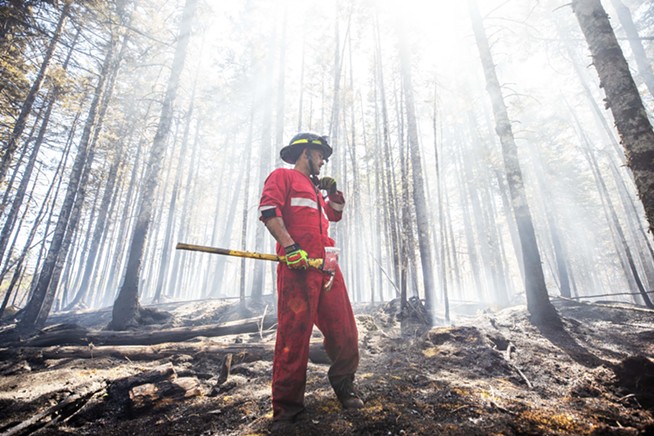
In an emailed statement provided to The Coast, a DND spokesperson calls Granchelli’s concerns “a very valid point of consideration,” adding that Canada’s military takes “those concerns very seriously, especially the safety of our neighbours in areas where we build and operate.”
The DND says traffic surveys conducted by Stantec found a “negligible impact” from the planned facility and the added vehicles it would bring. But Granchelli argues the survey wasn’t thorough enough: For one thing, traffic data was collected in July—“when the schools were closed, so traffic would be different there”—and it only accounted for one intersection, at Shore Road and Caldwell Road. It also neglected to include a planned subdivision near Shore Road and Oceanlea Drive.

Then, there’s the matter of wetlands: Field surveys show 17 wetland pockets at Hartlen Point, ranging in size from 11 hectares (nearly 10 times the footprint of the proposed land-based testing building) to as small as 0.02 hectares (about one-sixth of an Olympic-sized swimming pool). The DND has said it will “avoid interactions” with Hartlen Point’s wetlands as much as possible, but CBCL’s wetland impact assessment found that 0.15 hectares of wetland will be “directly altered” by the DND’s planned site. It recommended culverts as a mitigation strategy, but cautioned that “there is potential” that a larger culvert “could potentially… lead to dryer bog conditions and a smaller bog area over time.”
“There is potential that the installation of a large culvert could potentially increase flow and lead to dryer bog conditions and a smaller bog area over time.”
tweet this
Dried peat bogs can present a wildfire risk. Granchelli worries that any development could disrupt Hartlen Point’s sensitive ecosystem and spur a repeat scenario of what happened a month ago in Indigo Shores.
“I’ve got no fire hydrants on my street,” she says.
A DND spokesperson tells The Coast that it is “not planning” on draining wetlands around Hartlen Point, and that it will “continue to coordinate with HRM, the Canadian Forces Fire Marshall, and the project design consultant to ensure evacuation routes are clear.
“The intent is to have a healthy balance between the design, construction, and operations of the building and the environment and community around it.”
Attention turns to Guilbeault’s response
All of these deliberations rest at the tip of Guilbeault’s pen. A man once dubbed “Green Jesus” for his dedication to the climate cause, the 53-year-old La Tuque, Que. native and eco-activist-turned-environment minister staged his first tree protest at the age of five; he was opposing a land developer’s plans to clear the woods behind his childhood home. In 2001, a 31-year-old Guilbeault scaled the CN Tower to hang a banner calling Canada and then-US president George Bush “climate killers.”

The members of Protect Hartlen Point are hoping they have an ally in the Liberal cabinet minister. They’ve already won the support of Dartmouth North MLA Susan Leblanc; the Nova Scotia NDP’s environment critic wrote a letter to Guilbeault and his fellow federal ministers Anita Anand and Joyce Murray earlier in January, expressing her “deep concern” about the DND’s Hartlen Point plans.
“We have the minister’s attention in a way we’ve never had it before,” Robb tells The Coast.
Those hoping for a halt to the DND project feel they have their best shot on July 8, if Guilbeault finds enough grounds for a second look at the Hartlen Point plans. The DND claims, for its part, that it has done enough due diligence already.
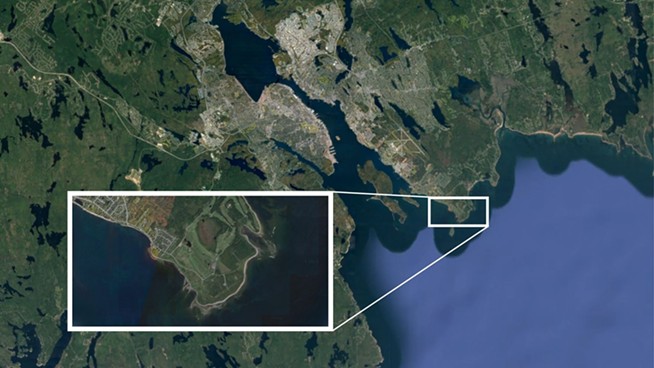
Proponents and critics of Guilbeault alike agree—either for better or worse—that he is not the activist of his youth. Six months after the one-time Greenpeace member was appointed as Canada’s environment minister in October 2021, he approved the Bay du Nord oil-drilling project off the coast of Newfoundland. The plan greenlit the extraction of 300 million barrels of oil over 30 years. (Norwegian oil giant Equinor has since delayed the $16-billion project, citing “significant cost increases.”) Guilbeault has faced criticism for cutting oil and gas companies slack in meeting their 2030 greenhouse gas emissions targets.
“I accept criticism that we could do better,” Guilbeault told The Coast in August 2022. The federal minister’s defense of his Liberal government has been an oft-used one, however: That Conservatives, should they come to power under Pierre Poilievre, would only make things worse for the climate.
“I need to be able to navigate those waters where the measures we put forward have enough buy-in... Making sure that we don’t lose the support of too many people, and then someone else comes in and everything we’ve been working for over the last eight years, more or less, goes down the drain.”
Robb figures the chances of Canada’s government agreeing to a full impact assessment are slim: “Usually the only projects that are designated are large mines, not even small mines, so we don’t have high expectations of it.”
But the principle matters, she says:
“In any community, you have to follow all the steps and all the rules.”

